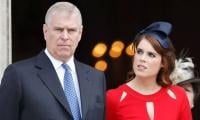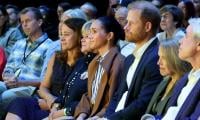From Aylan Kurdi to Omran Daqneesh
Dubai eye
Every now and then something happens that restores your faith in humanity – just a wee bit. Like the infectious, spontaneous breaking down of CNN anchor Kate Bolduan while reporting the heart-rending story of Omran Daqneesh, the five-year old Syrian boy who survived a military airstrike on Aleppo.
“This is Omran. He’s alive. We wanted you to know”, she said, before losing her composure. Bolduan was the sharing details about the five-year-old and the state he was in following the airstrike. The footage showed little Omran being pulled out of rubble and put into an ambulance, all dazed and catatonic by trauma.
The little one’s iconic image, all covered in dust and blood, with him wiping his face and looking at his blood-smeared hand, is being seen as emblematic of the Syrian tragedy. Just as Aylan Kurdi, the Syrian boy who had turned up dead on a Turkish beach last year.
Visuals of Omran too have left the world shocked and grieving, reflected in the pain of the CNN anchor: “What strikes me is we shed tears, but there are no tears here. He doesn’t cry once. That little boy is in total shock. He’s stunned. Inside his home one moment and the next, lost in the flurry and fury of war and chaos,” she said, fighting back tears.
Journalists are human too, although in their daily struggle to meet deadlines and pursue the interests of their employers and corporate masters they try hard not to be swayed too often by human emotions. Every now and then they betray their basic, innate humanity as Bolduan has.
If only politicians and governments had been touched by some of this humanity and hadn’t repeatedly sacrificed it at the altar of national interest and political survival, Syria would have stopped bleeding long ago.
When the history of these interesting times is written, the people of Syria will perhaps be right at the top. They have suffered so much for so long on the watch of the blessed international community and its fine institutions.
Unlike the other so-called Arab spring revolutions if Syria has taken the longest to defeat its demons, it is largely because of the curse of sectarianism.
If Iran’s Ayatollahs and Lebanon’s Hezbollah, once admired across the Arab world for taking on Israel, had not stepped in to rescue the corrupt, ruthless Baathist regime it would have crumbled within months, if not weeks, of the uprising, avoiding hundreds of thousands of precious lives.
The ‘revolutionaries’ who once passionately championed Islam and Muslim causes and chastised Arabs for ‘ganging up with the West against Muslim neighbours’ think nothing of allowing Russian jets to use an Iranian military base to launch attacks on the already battered Syrian cities like Aleppo and its totally defenceless civilians.
The iconic image of Omran Daqneesh, which shocked the world this week, had been spawned with the help of relentless Russian and Syrian bombing on Aleppo and other cities. There are thousands and thousands of Omrans who are not fortunate enough to be rescued and flashed on global television screens.
In the words of Hamid Dabashi, today’s Syria is like a shooting gallery, presided over by a murderous Bashar al-Assad, sustained in power by Russia and Iran, opposed by even more murderous outfits armed to teeth by the US and its allies.
In this cacophony of wanton cruelty, what is an ‘icon’? What can an ‘icon’ mean, or do, or be? The same media that brings us this ‘icon’ today has the attention span of a schizophrenic baboon, and by tomorrow this ‘icon’ will be forgotten for another.
I have been a trenchant critic of reckless and mindless US ‘interventions’ in the Middle East and all that has been going on in the name of democracy and freedom. Of course, the US and its ‘willing allies’ are fundamentally responsible for this whole mess and the loss of nearly two million lives in the past decade and more.
Ironically, President Barack Obama who tenaciously and rightly opposed his predecessor’s disastrous war on Iraq on the pretext of Saddam Hussain’s mythical weapons of mass destruction has been guilty of wreaking similar havoc and chaos on Syria with his singular inaction.
As Robert Ford, the last US ambassador to Syria who quit two years ago in frustration, saying he could no longer defend the US policy of indifference, argued last week, this president has had a “myopic” focus on the self-styled IS, while ignoring the larger problem that gave birth to it.
“The Islamic State is a problem, but the IS came out of the broader problem of the Syrian civil war. And it really is not going to be solved outside the context, outside a larger solution to the Syrian civil war”, Ford told CNN, pointing out that America is “trying to fix with a military hammer a deeper political problem.”
So in my view, for what it is worth, Syria may be the biggest and spectacular leadership failure of the Nobel laureate president.
Donald Trump may be a bigot but he is not far off the mark when he suggests Obama and Hillary Clinton, his secretary of state in his first term, “co-founded” IS. Okay, they may not have literally created it but they have certainly mid-wifed it, wittingly or unwittingly with their deathly indifference.
But there are many others – Shia and Sunni militias, politicians and assorted extremists – who must share the blame with the West and the regional stakeholders for perpetuating the misery of Syria and its luckless people by unleashing this genie of sectarianism on the region.
They are equally guilty of sending thousands of innocents to death. They have ended up justifying appalling crimes against humanity by joining and aiding the free-for-all bloodletting along sectarian lines.
What began as resistance against the US occupation in neighbouring Iraq after the fall of Saddam Hussein degenerated into a sectarian genocide of fearsome proportions.
The deadly conflict between Islam’s two sects has not just spilled over the borders of Iraq and Syria into neighbouring countries but now threatens the entire Islamic world.
If this conflict is globalised, the possible scenario for the Muslim world, already afflicted with a myriad problems, is too frightening to even imagine. The whole of the Muslim world could end up looking like a big, burning Babylon.
How long will Shias and Sunnis allow themselves to be used and exploited as pawns in the hands of their enemies? What will it take to see that before they are condemned by their sectarian identities, and that they are Muslims and human beings first?
How can we go on slaughtering each other with impunity over pointless, endless academic debates – and that too in the name of a faith that claims to stand for peace, mercy and forgiveness? If we all love and revere the Prophet (pbuh), his noble family and Companions, what is this never-ending, all-consuming battle about?
We all believe that Islam came as a blessing to the whole of mankind. It does not condone bloodshed, whatever the beliefs.
If we cannot have mercy on our own, how can we promise glad tidings to the rest of humanity?
The writer is a Middle East based
columnist. Email: aijaz.syed@
hotmail.com
-
 Why Royal Lodge Fell Into Disarray Under Andrew: Insider Exposes Loophole
Why Royal Lodge Fell Into Disarray Under Andrew: Insider Exposes Loophole -
 Hoda Kotb 'so Proud' As Today 'magic Reignites' With Sheinelle Jones
Hoda Kotb 'so Proud' As Today 'magic Reignites' With Sheinelle Jones -
 Kate Middleton Avoids Nanny Involvmenet In Prince George Matters
Kate Middleton Avoids Nanny Involvmenet In Prince George Matters -
 Colin Jost Jokes About Scarlett Johansson Losing Highest-grossing Actor Crown To Zoe Saldana
Colin Jost Jokes About Scarlett Johansson Losing Highest-grossing Actor Crown To Zoe Saldana -
 ‘Traitor’ Prince Harry Has ‘spooked’ His Family: ‘He Has To Pay A Price Of Re-entry’
‘Traitor’ Prince Harry Has ‘spooked’ His Family: ‘He Has To Pay A Price Of Re-entry’ -
 Andrew’s Daughter Princess Eugenie Sparks Seismic Change After Stepping Away
Andrew’s Daughter Princess Eugenie Sparks Seismic Change After Stepping Away -
 Meghan Markle Shares NEW Photos From Day Out At The Zoo
Meghan Markle Shares NEW Photos From Day Out At The Zoo -
 'Game Of Thrones' New Series Returns To 'home'
'Game Of Thrones' New Series Returns To 'home' -
 Prince Harry Touches Down In Heathrow For The Witness Box
Prince Harry Touches Down In Heathrow For The Witness Box -
 Harry’s Turmoil Turns To Agony Over Meghan Markle’s Hope: ‘Time Will Tell If He’ll Bare It’
Harry’s Turmoil Turns To Agony Over Meghan Markle’s Hope: ‘Time Will Tell If He’ll Bare It’ -
 Reese Witherspoon Jokes About Jennifer Garner’s 'dark Side'
Reese Witherspoon Jokes About Jennifer Garner’s 'dark Side' -
 'Lion King' Co-director Roger Allers Breathes His Last At 76
'Lion King' Co-director Roger Allers Breathes His Last At 76 -
 Prince Harry’s Security ‘isn’t Just For His Family’: Expert Rewires Security Woe
Prince Harry’s Security ‘isn’t Just For His Family’: Expert Rewires Security Woe -
 Prince Harry Risks Making King Charles Choose Between Queen Camilla And Military Duty
Prince Harry Risks Making King Charles Choose Between Queen Camilla And Military Duty -
 Kate Hudson Jokes She May Write A Script To Star Alongside This Actress
Kate Hudson Jokes She May Write A Script To Star Alongside This Actress -
 Inside How Kate Middleton Stayed Steady Amid Cancer And Royal Chaos
Inside How Kate Middleton Stayed Steady Amid Cancer And Royal Chaos



